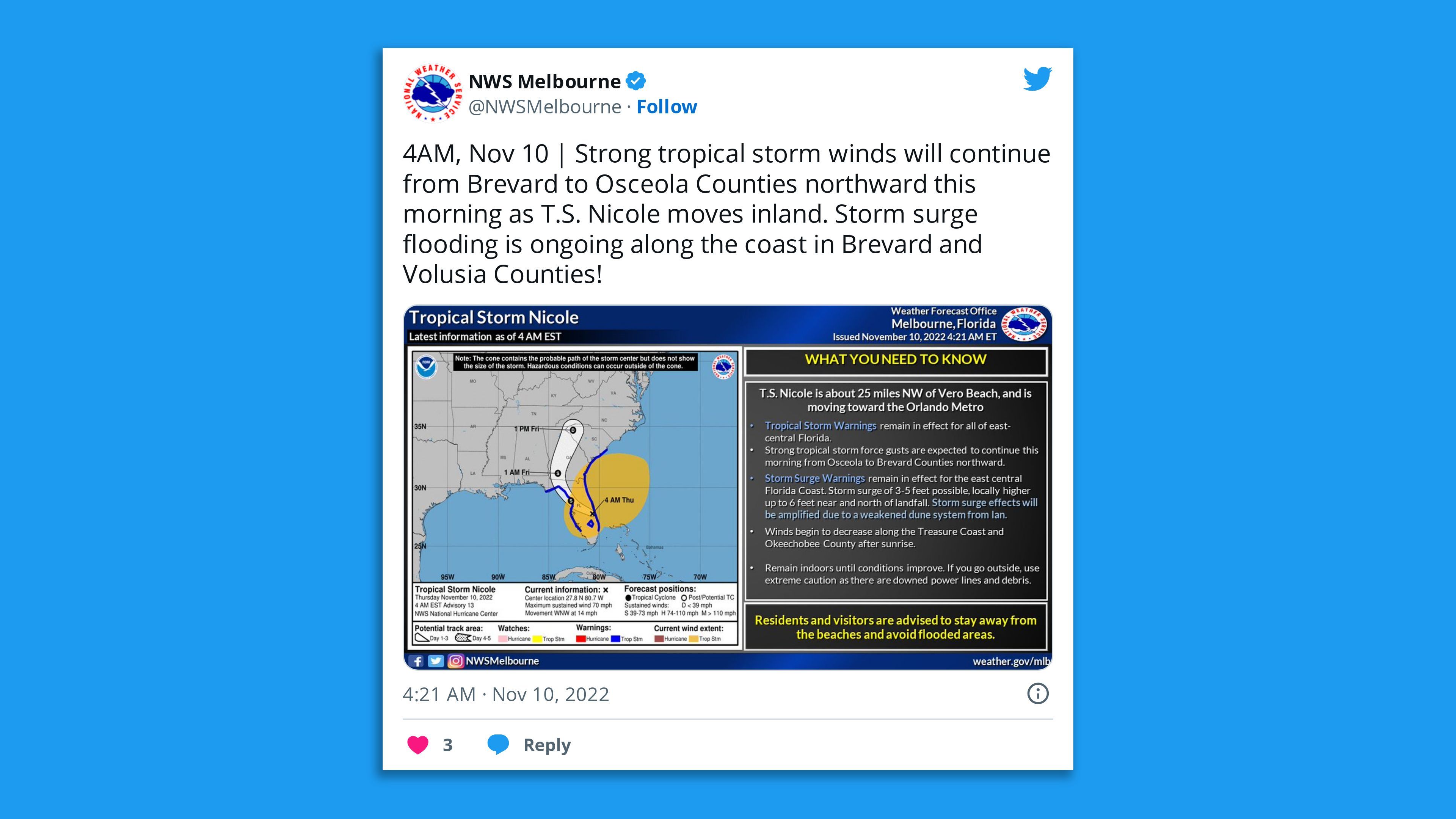Nicole made landfall as a Category 1 hurricane on the east coast of the Florida peninsula, just south of Vero Beach, packing maximum sustained winds of 75 mph about 3am Thursday — leaving thousands without power.
The latest: About an hour later, Nicole weakened to a still-dangerous tropical storm with maximum sustained winds of 70 mph as it moved over east-central Florida — bringing with it strong winds, powerful storm surge and waves as it dumped heavy rains across a large area, per the National Hurricane Center.

Driving the news: The hurricane made landfall on North Hutchinson Island after unleashing heavy rains, damaging winds and causing storm surge flooding for several hours along the east coast of Florida, north to Georgia and South Carolina before it made landfall.
- Nearly 85,000 customers were without power in Florida at 4:30am, according to utility tracker poweroutage.us.
- Peak wind gusts of 71 mph were recorded at Cape Canaveral Space Force Station early Thursday, according to the National Weather Service's Melbourne office. NASA left its Artemis I rocket on its Cape Canaveral launch site to ride out the storm and postponed its launch attempt to Nov. 16.
By the numbers: Per the NWS, peak wind gusts recorded elsewhere in Florida as of 3:30am included: 73 mph at Playalinda Beach; 70 mph at Melbourne; 70 mph at Indialantic; 67 mph at Patrick Air Force Base; 60 mph at New Smyrna Beach; 66 mph at Sebastian Inlet and; 58 mph at Vero Beach.
The big picture: Gov. Ron DeSantis (R) signed an executive order expanding the number of counties under state of emergency declarations to 45 counties on Wednesday and President Biden approved Florida's emergency declaration earlier that morning.
- 600 National Guard members were activated and 16,000 utility workers were placed on standby to respond to power outages ahead of the storm, per a statement from DeSantis Wednesday.
- Mandatory and voluntary evacuations occurred along Florida's eastern coast ahead of the storm surge.
Of note: No other hurricane on record has made landfall so late in the year along the east coast of Florida, per Phil Klotzbach, a tropical weather researcher at Colorado State University.
- The only other two hurricanes on record to strike the state during the month of November were the Yankee Hurricane in 1935 and Hurricane Kate in 1985.
Between the lines: Jeff Masters, a meteorologist and author with Yale Climate Connections, noted that Nicole strengthened on its way to Florida as the Atlantic Ocean was about 2 degrees Fahrenheit warmer than normal for this time of year, per Bloomberg.
- This is linked to climate change and other factors including a shift in the jet stream, which could also be attributed to global warming.
- "So many things are going haywire right now in the climate system that we can just add this to the list," Masters told Bloomberg.
Editor's note: This article has been updated with new details throughout.







